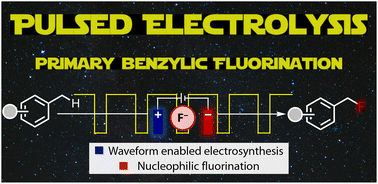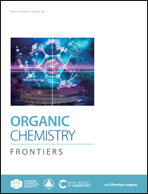Pulsed electrolysis: enhancing primary benzylic C(sp3)–H nucleophilic fluorination†
Abstract
Electrosynthesis is an efficient and powerful tool for the generation of elusive reactive intermediates. The application of alternative electrolysis waveforms provides a new level of control for dynamic redox environments. Herein, we demonstrate that pulsed electrolysis provides a favourable environment for the generation and fluorination of highly unstable primary benzylic cations from C(sp3)–H bonds. By introduction of a toff period, we propose this waveform modulates the electrical double layer to improve mass transport and limit over-oxidation.

- This article is part of the themed collections: Organic Chemistry Frontiers Emerging Investigator Series 2024–2025 and Organic Chemistry Frontiers Outstanding Paper Awards 2014-2023


 Please wait while we load your content...
Please wait while we load your content...